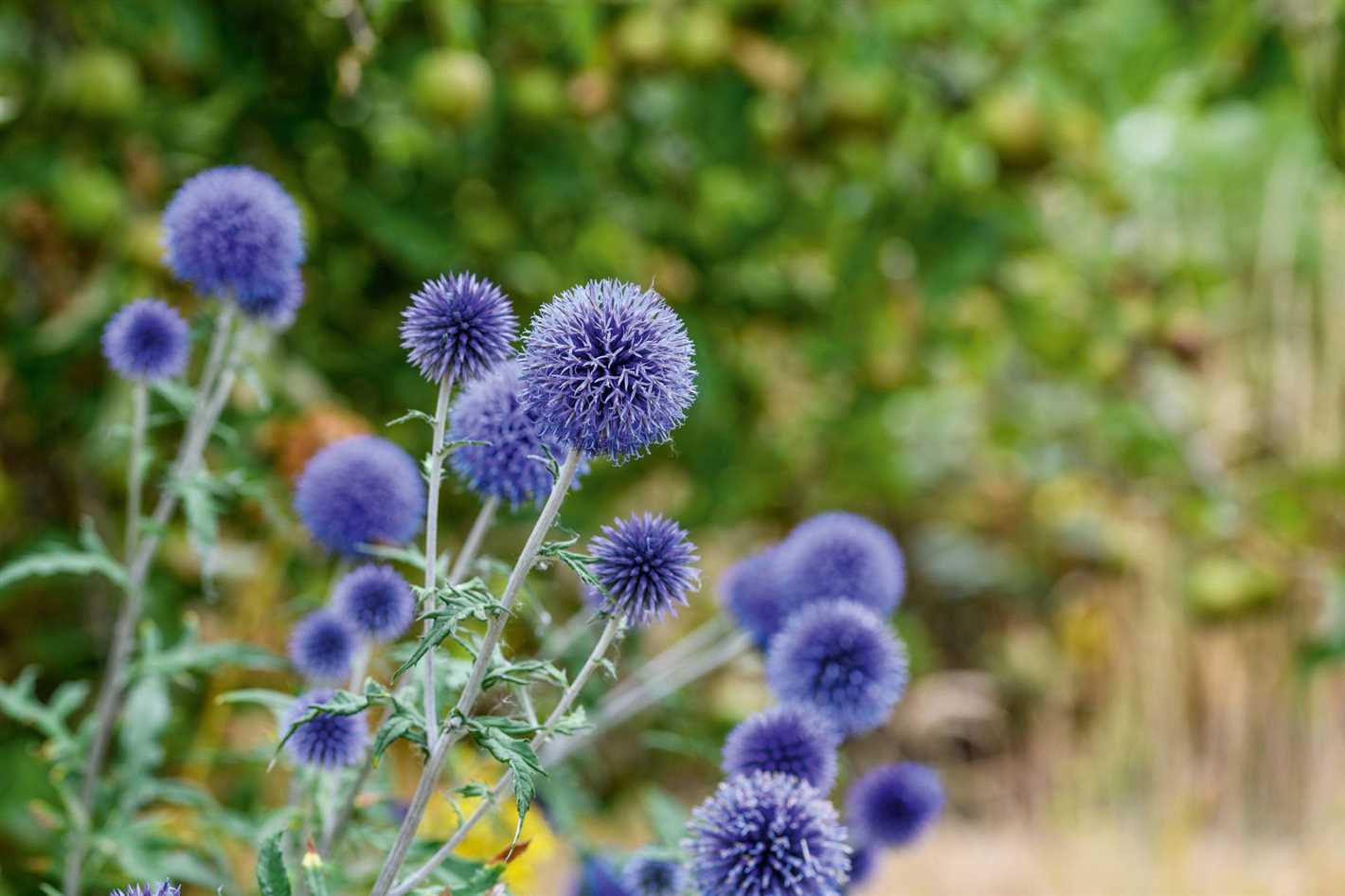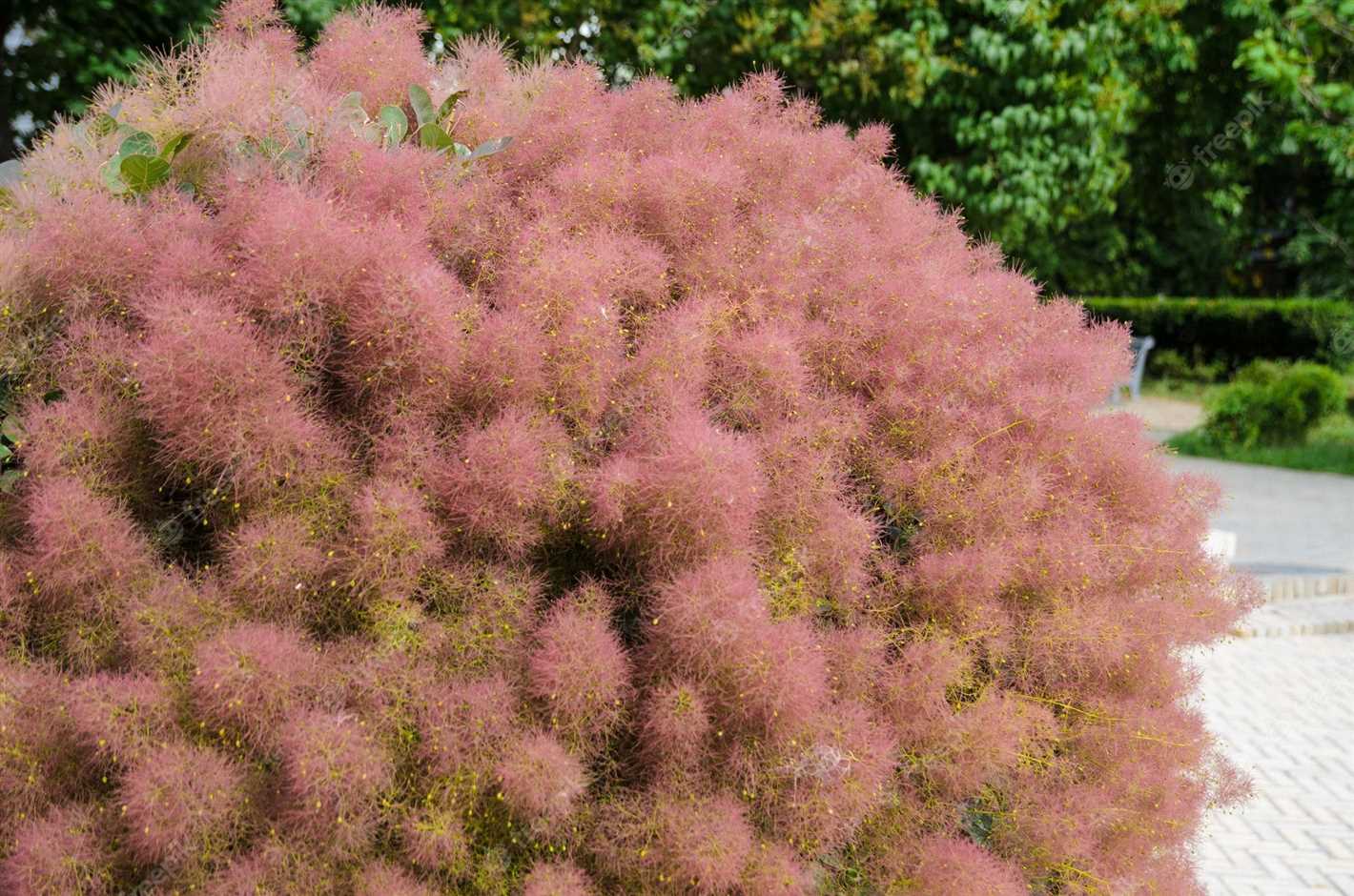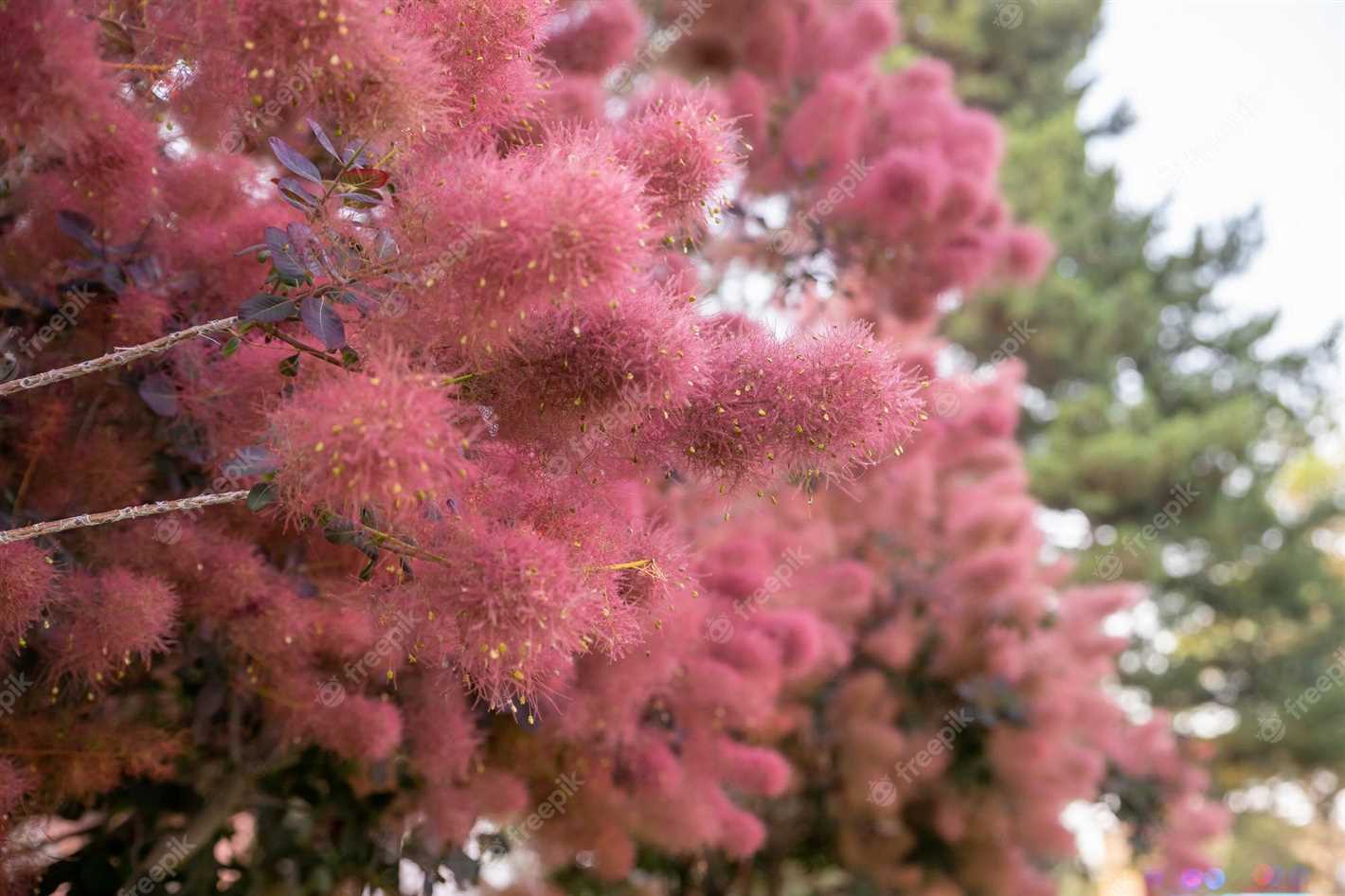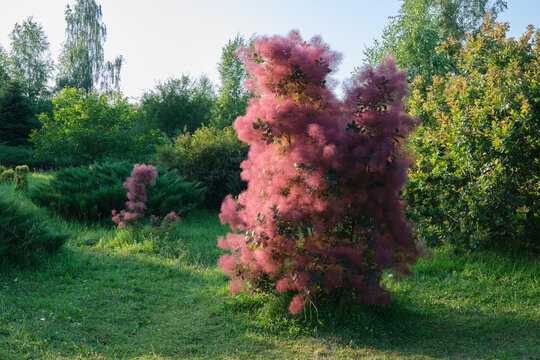- Why Growing Scumpia is Worth It
- The Basics of Scumpia Care
- 1. Choose the Right Location
- 2. Watering
- 3. Fertilization
- 4. Pruning
- 5. Pest and Disease Control
- 6. Mulching
- 7. Winter Protection
- Choosing the Perfect Location for Your Scumpia
- Sun Exposure
- Soil Conditions
- Climate Considerations
- Spacing and Air Circulation
- Protection from Harsh Elements
- Conclusion
- Soil Requirements for Healthy Scumpia Growth
- 1. Well-Drained Soil
- 2. Neutral to Slightly Acidic pH
- 3. Nutrient-Rich Soil
- 4. Loamy or Sandy Texture
- 5. Mulching
- 6. Avoid Compacted Soil
- Watering Tips for Thriving Scumpia
- 1. Avoid Overwatering
- 2. Water Deeply
- 3. Water in the Morning
- 4. Mulch
- 5. Adjust watering according to weather
- 6. Monitor soil moisture
- Trimming and Pruning Scumpia: A Step-by-Step Guide
- Tools Needed:
- Step 1: Assessing the Plant
- Step 2: Cleaning the Tools
- Step 3: Removing Dead or Diseased Branches
- Step 4: Shaping the Shrub
- Step 5: Pruning for Health and Growth
- Step 6: Clean-Up
- Step 7: Regular Maintenance
- Common Pests and Diseases to Watch Out For
- Pests
- Diseases
- Scumpia Propagation Methods Made Easy
- 1. Propagation by seeds
- 2. Propagation by cuttings
- 3. Propagation by layering
- Questions and Answers:
- Videos: How to prune Kolkwitzia amabilis
Scumpia, also known as the “underestimated shrub,” is a hidden gem in the world of gardening. Often overlooked and overshadowed by more popular plants, scumpia possesses a unique beauty that is waiting to be discovered. With its versatile characteristics and low-maintenance nature, this shrub is a perfect addition to any garden.
One of the reasons why scumpia is underestimated is its unassuming appearance. With its slender branches and small, delicate leaves, it may not immediately catch your attention. However, upon closer inspection, you will find that scumpia is a true beauty. Its leaves come in various shades of green and often have a glossy sheen, making them stand out in any garden.
Another factor that contributes to its underestimation is its lack of popularity. While other plants may steal the spotlight, scumpia quietly grows in the background, showcasing its resilience and adaptability. It can thrive in different soil conditions and is resistant to many diseases and pests. This makes scumpia an ideal choice for both experienced gardeners and beginners looking to add a touch of beauty to their outdoor space.
Furthermore, scumpia’s versatility makes it a valuable asset in any garden design. It can be grown as a standalone shrub or used as a hedge to create privacy. Its slender branches can be trained to grow in different shapes, making it an excellent choice for topiary or sculptural plantings. With proper care and pruning, scumpia can be shaped into stunning focal points, adding a touch of elegance to any landscape.
In conclusion, it is time to uncover the beauty of the underestimated shrub – scumpia. Its unassuming appearance and lack of popularity should not deter you from exploring its unique attributes. Whether you are an experienced gardener or a beginner looking to enhance your outdoor space, scumpia is a versatile and low-maintenance plant that will bring charm and beauty to your garden. So, give scumpia a chance and watch as its hidden beauty blooms before your eyes.
Why Growing Scumpia is Worth It
Scumpia, also known as the underrated beauty, is a shrub that deserves more love and attention from gardeners and plant enthusiasts alike. Here are a few reasons why growing scumpia is worth it:
- Hardiness: Scumpia is a highly resilient shrub that can thrive in a wide range of climates and soil conditions. It can withstand extreme temperatures and survive in both drought-prone and waterlogged areas.
- Low Maintenance: Unlike some other plants, scumpia requires minimal care. It is a low-maintenance shrub that doesn’t require frequent watering or pruning. It can thrive with minimal intervention, making it a perfect addition to busy gardeners’ yards.
- Attractive Foliage: Scumpia boasts beautiful foliage that adds color and texture to any garden. Its leaves are a vibrant green, and some varieties even feature variegated or colorful foliage that can create stunning visual interest in your outdoor space.
- Drought Tolerance: Due to its ability to store water in its roots, scumpia is highly drought-tolerant. This makes it an excellent choice for gardens in water-scarce areas or for individuals who want to conserve water.
- Wildlife Habitat: Scumpia is a magnet for pollinators and birds. The blooms of scumpia attract bees, butterflies, and other beneficial insects, contributing to the overall biodiversity of your garden. Additionally, the shrub’s berries provide a valuable food source for birds, adding life and movement to your outdoor space.
- Erosion Control: Scumpia has an extensive root system that helps stabilize soil and prevent erosion. This makes it an ideal choice for areas with sloping terrain or landscapes prone to soil erosion.
In conclusion, growing scumpia is a worthwhile endeavor that offers numerous benefits. From its hardiness and low maintenance requirements to its attractive foliage and role in wildlife habitat and erosion control, scumpia is a versatile and underrated shrub that should be more appreciated in gardens and landscapes.
The Basics of Scumpia Care
Growing and caring for Scumpia plants can be a rewarding experience. With the right care, these shrubs can thrive and beautify your garden. Here are some essential tips to keep in mind:
1. Choose the Right Location

Scumpia shrubs love to bask in full sunlight, so it’s important to choose a location that receives at least six hours of direct sunlight a day. They also prefer well-draining soil, so make sure the soil is loose and fertile.
2. Watering
Scumpia plants have moderate water needs, and it’s crucial not to overwater them. Water the plants deeply once a week, allowing the soil to dry out between waterings. Avoid getting the foliage wet to prevent fungal diseases.
3. Fertilization
Scumpia shrubs benefit from regular fertilization during the growing season. Use a balanced slow-release fertilizer or a fertilizer specifically formulated for flowering shrubs. Apply the fertilizer according to the package instructions to avoid overfertilization.
4. Pruning
Pruning helps maintain the shape and overall health of Scumpia shrubs. Prune the shrubs in early spring before new growth appears. Remove any dead or damaged branches, as well as any branches that are crossing or rubbing against each other. This will promote air circulation and prevent disease.
5. Pest and Disease Control

Scumpia plants are generally resistant to pests and diseases. However, they can occasionally be affected by aphids, scale insects, or powdery mildew. Regularly inspect the plants for any signs of infestation or disease. Use insecticidal soap or horticultural oil to control pests, and fungicides to treat fungal infections.
6. Mulching
Applying a layer of mulch around the base of Scumpia shrubs helps conserve moisture, suppress weeds, and regulate soil temperature. Use organic mulch, such as wood chips or shredded bark, and apply it in a 2-3 inch layer, keeping it a few inches away from the stems of the plants to prevent rot.
7. Winter Protection
In regions with cold winters, Scumpia plants may need some protection. Apply a layer of mulch around the base of the shrubs to insulate the roots and prevent frost damage. You can also wrap the shrubs with burlap or cover them with a frost cloth during extreme cold spells.
By following these basic care guidelines, you can ensure that your Scumpia shrubs thrive and bring beauty to your garden for years to come.
Choosing the Perfect Location for Your Scumpia
When it comes to helping your scumpia thrive, one of the most important factors to consider is the location where you will plant it. The right location can make a significant difference in the growth and overall health of your scumpia shrub.
Sun Exposure
Scumpia plants thrive in full sun to partial shade. It is important to find a location that receives at least 6 hours of direct sunlight each day. However, scumpia can also tolerate some shade, especially in hot climates, where it can benefit from some protection from the intense sun.
Soil Conditions

Scumpia plants prefer well-draining soil that is rich in organic matter. They do not tolerate waterlogged conditions, so it is important to avoid areas with poor drainage. Sandy loam or loamy soil with a pH level between 6 and 7 is ideal for scumpia.
Climate Considerations
Scumpia plants are native to warm climates and do well in zones 7 to 10. They can tolerate heat and drought conditions, but they are not cold-hardy. If you live in a colder climate, you may need to protect your scumpia shrub during the winter months.
Spacing and Air Circulation
It is important to give your scumpia enough space to grow and allow for proper air circulation. Crowded plants can cause poor air circulation, which can lead to the development of diseases and pests. Make sure to provide enough room between scumpia shrubs to encourage healthy growth.
Protection from Harsh Elements
When choosing a location for your scumpia, consider protection from harsh elements such as strong winds and frost. Planting your scumpia near a fence, wall, or other structures can provide some protection. Additionally, you can cover your scumpia with burlap or other protective materials during frosty periods.
Conclusion
Choosing the perfect location for your scumpia is essential for its growth and overall health. Consider sun exposure, soil conditions, climate, spacing, and protection from harsh elements. By providing the right conditions, you can help your scumpia flourish and uncover the beauty of this underestimated shrub.
Soil Requirements for Healthy Scumpia Growth
Scumpia is a versatile and hardy shrub that can thrive in a variety of soil conditions. However, providing the right soil environment can greatly enhance the health and growth of your scumpia plants. Here are some important soil requirements for growing healthy scumpia:
1. Well-Drained Soil
Scumpia plants prefer well-drained soil that allows water to flow easily through the soil particles. This ensures that the roots are not sitting in waterlogged soil, which can cause root rot and other issues. To promote good drainage, amend heavy clay soils with organic matter such as compost or peat moss.
2. Neutral to Slightly Acidic pH
Scumpia plants thrive in neutral to slightly acidic soil with a pH range of 6.0 to 7.0. Test the pH of your soil using a soil testing kit or send a sample to a local extension service for analysis. If your soil is too alkaline, you can lower the pH by incorporating elemental sulfur or acidic peat moss into the soil.
3. Nutrient-Rich Soil

Scumpia plants require a nutrient-rich soil to support their healthy growth. Incorporate organic matter, such as compost or well-rotted manure, into the soil before planting. This will provide a steady supply of nutrients and improve soil fertility.
4. Loamy or Sandy Texture
Scumpia plants prefer loamy or sandy soil with a good balance of drainage and water retention. These soil types allow for proper aeration and moisture management, promoting healthy root development. If your soil is heavy clay, amending it with organic matter can help improve its texture.
5. Mulching
Applying a layer of organic mulch around the base of scumpia plants can help retain soil moisture, suppress weeds, and regulate soil temperature. Use materials such as wood chips, straw, or compost as mulch, and replenish it regularly to maintain a adequate depth.
6. Avoid Compacted Soil
Avoid planting scumpia in compacted soil, as it restricts root growth and limits water and nutrient uptake. If your soil is compacted, aerate it by making small holes using a garden fork or aerator. This will help break up compacted soil and improve its structure.
By providing the right soil environment, you can ensure the healthy growth and development of your scumpia plants. Remember to regularly monitor soil moisture levels and adjust watering accordingly to avoid over-watering or under-watering.
Watering Tips for Thriving Scumpia
Proper watering is essential for the growth and health of your scumpia shrub. By following these watering tips, you can help your scumpia thrive and uncover its true beauty.
1. Avoid Overwatering
Overwatering can be detrimental to scumpia, as it can lead to root rot and other diseases. It is important to maintain a consistent level of moisture in the soil without soaking it. Before watering, check the moisture level by inserting your finger into the soil. If it feels damp about an inch below the surface, hold off on watering.
2. Water Deeply
When you do water your scumpia, make sure to water deeply. This means applying enough water so that it reaches the root zone, encouraging deep root growth. Shallow watering can result in a weak root system, making the shrub more susceptible to stress and disease. Use a slow and steady watering method to ensure that the water penetrates the soil deeply.
3. Water in the Morning
Watering your scumpia in the morning is the best time to do so. This allows the water to be absorbed by the plant before the heat of the day evaporates it. Avoid watering in the evening as the excess moisture can create a favorable environment for fungal diseases to develop.
4. Mulch
Applying a layer of mulch around your scumpia shrub can help retain moisture in the soil and prevent weed growth. Mulch also protects the roots from extreme temperatures and reduces evaporation, resulting in less frequent watering. Spread a 2-3 inch layer of organic mulch around the base of the plant, leaving a small gap around the stem to prevent rotting.
5. Adjust watering according to weather
During hot and dry periods, your scumpia may require more frequent watering. Pay attention to the weather and adjust your watering schedule accordingly. However, be cautious not to overwater during cooler and wetter seasons. It is important to strike a balance and provide enough moisture without drowning the roots.
6. Monitor soil moisture
Regularly check the moisture level of the soil around your scumpia. Stick your finger into the soil and evaluate its dampness. If it feels dry, it’s time to water. If it feels damp, hold off on watering. Remember that different soil types retain moisture differently, so adjust your watering frequency based on your specific soil conditions.
By following these watering tips, you can establish a proper watering routine for your scumpia shrub and ensure its healthy growth and beauty for years to come.
Trimming and Pruning Scumpia: A Step-by-Step Guide
Tools Needed:
- Pruning shears
- Hedge trimmers
- Gloves
- Protective eyewear
Step 1: Assessing the Plant
Before starting the trimming and pruning process, it’s important to assess the overall health and shape of your scumpia shrub. Look for any dead or diseased branches that need to be trimmed to maintain the plant’s health. Additionally, consider the desired shape and size of the shrub, as this will guide your pruning decisions.
Step 2: Cleaning the Tools

Before using your pruning shears and hedge trimmers, ensure that they are clean and sharp. Dirty or dull tools can cause damage to the shrub and may introduce diseases. Use a cloth or brush to remove any dirt or debris, and sharpen the blades if necessary.
Step 3: Removing Dead or Diseased Branches
Using the pruning shears, carefully cut away any dead or diseased branches. These branches can hinder the overall growth and appearance of the scumpia shrub. Make clean cuts just above the nearest healthy bud or branch.
Step 4: Shaping the Shrub
If you’re looking to maintain a specific shape or size for your scumpia shrub, use the hedge trimmers to carefully trim away any overgrown or unruly branches. Take your time and trim small sections at a time to ensure you achieve your desired shape without damaging the plant.
Step 5: Pruning for Health and Growth
Pruning can stimulate new growth and improve the overall health of your scumpia shrub. Look for any crowded or crossing branches that may be impeding airflow and light penetration. Carefully remove these branches to create a more open and vibrant shrub.
Step 6: Clean-Up
Once you have finished trimming and pruning your scumpia shrub, gather and dispose of any pruned branches and debris. This will help maintain the cleanliness of your garden and reduce the risk of diseases or pests.
Step 7: Regular Maintenance
Regularly monitor the growth of your scumpia shrub and continue to trim or prune as needed. By consistently maintaining its shape and health, you can enjoy the full beauty of this underestimated shrub for years to come.
Common Pests and Diseases to Watch Out For
While scumpia is generally a resilient and low-maintenance shrub, it is still susceptible to certain pests and diseases. Being aware of these issues can help you identify and prevent potential problems with your scumpia plants.
Pests
Here are some common pests that can affect scumpia:
- Aphids: These small insects feed on the sap of scumpia plants, causing leaves to curl and become distorted. Regularly inspect your plants for these pests and use insecticidal soap to control their population.
- Mealybugs: Mealybugs are white, cottony insects that can infest scumpia plants. They suck sap and excrete honeydew, which can promote the growth of sooty mold. Remove mealybugs by hand or use insecticidal soap.
- Scale insects: Scale insects are small, immobile pests that attach themselves to the stems and leaves of scumpia plants. They feed on the sap and can weaken the plant. Use horticultural oil or insecticidal soap to control scale infestations.
- Spider mites: Spider mites are tiny pests that feed on the underside of scumpia leaves, causing stippling and yellowing. Regularly mist your plants to prevent spider mite infestations, and use insecticidal soap if necessary.
Diseases
Here are some common diseases that can affect scumpia:
- Leaf spot: Leaf spot is a fungal disease characterized by dark spots on the leaves of scumpia plants. Remove infected leaves and avoid overhead watering to prevent the spread of the disease.
- Powdery mildew: Powdery mildew is a fungal disease that forms a white, powdery coating on the leaves of scumpia plants. Improve air circulation and avoid overhead watering to reduce the risk of powdery mildew.
- Root rot: Root rot is caused by excessive soil moisture and can lead to the wilting and death of scumpia plants. Improve drainage and avoid overwatering to prevent root rot.
- Leaf blight: Leaf blight causes wilting and browning of scumpia leaves. Remove infected leaves and ensure proper watering to prevent leaf blight.
Regularly inspecting your scumpia plants and taking appropriate measures to control pests and prevent diseases will ensure the health and beauty of your shrubs.
Scumpia Propagation Methods Made Easy
Scumpias are a versatile shrub that can be easily propagated through various methods. Whether you want to grow scumpias from seeds, cuttings, or by layering, you can successfully propagate these beautiful plants with a little bit of effort. Here are some simple methods to get you started:
1. Propagation by seeds
Propagating scumpias from seeds is the most common method and can be done by following a few simple steps:
- Collect fresh scumpia seeds from mature, healthy plants.
- Remove any flesh or pulp from the seeds and soak them in water overnight.
- Prepare a well-draining potting mix and sow the seeds about half an inch deep.
- Keep the soil moist and place the pot in a warm location with indirect sunlight.
- Germination usually takes about 3-6 weeks. Once the seedlings have developed a few leaves, they can be transplanted into individual pots or directly into the garden.
2. Propagation by cuttings
Propagating scumpias from cuttings is another effective method and can be done as follows:
- Select a healthy stem from a mature scumpia plant and take a cutting that is about 6-8 inches long.
- Remove the leaves from the lower two-thirds of the cutting.
- Apply a rooting hormone to the cut end of the stem to encourage root growth.
- Insert the cutting into a well-draining potting mix or directly into the garden soil.
- Keep the soil moist and place the cutting in a shaded area with indirect sunlight.
- Rooting usually takes about 4-6 weeks. Once the cutting has developed strong roots, it can be transplanted into a larger pot or directly into the garden.
3. Propagation by layering
Propagating scumpias by layering is a simple and effective method that involves:
- Select a low branch of a mature scumpia plant that is flexible and close to the ground.
- Make a small, shallow cut in the branch where it touches the ground.
- Secure the cut portion of the branch to the ground using a U-shaped wire or a stone.
- Cover the cut portion of the branch with soil, leaving the tip exposed.
- Keep the soil moist and wait for roots to develop from the covered portion of the branch, usually within 2-3 months.
- Once the rooted portion of the branch has developed strong roots, it can be carefully separated from the parent plant and transplanted into a larger pot or directly into the garden.
With these simple propagation methods, you can easily grow scumpias and enjoy their beauty in your garden. Experiment with these techniques and discover which one works best for you!







